A human anatomical figure
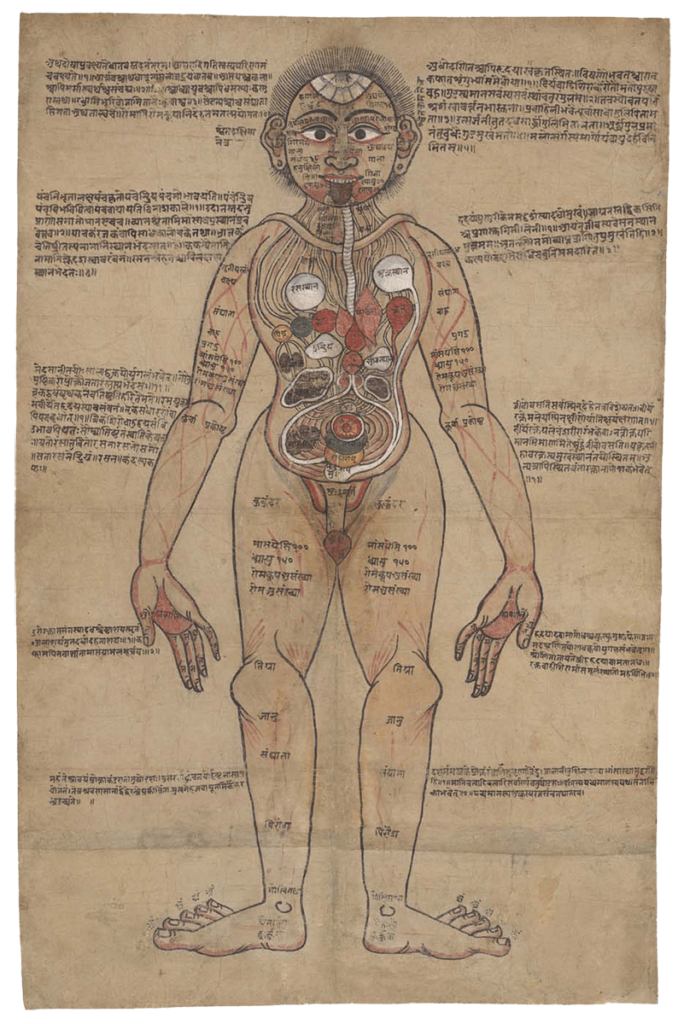
A human anatomical figure Drawing, Nepalese, ca. 1800 (?) Source: Wellcome Library no. 574912iWellcome Collection. Public Domain Mark. – Although India has thousands of manuscripts of premodern medical texts, only a handful contain anatomical illustrations. Text was crucially important for transmitting medical teachings. Figure 1 combines text with an illustration of the body and its […]
John Banister Delivering an Anatomical Lecture on the Viscera
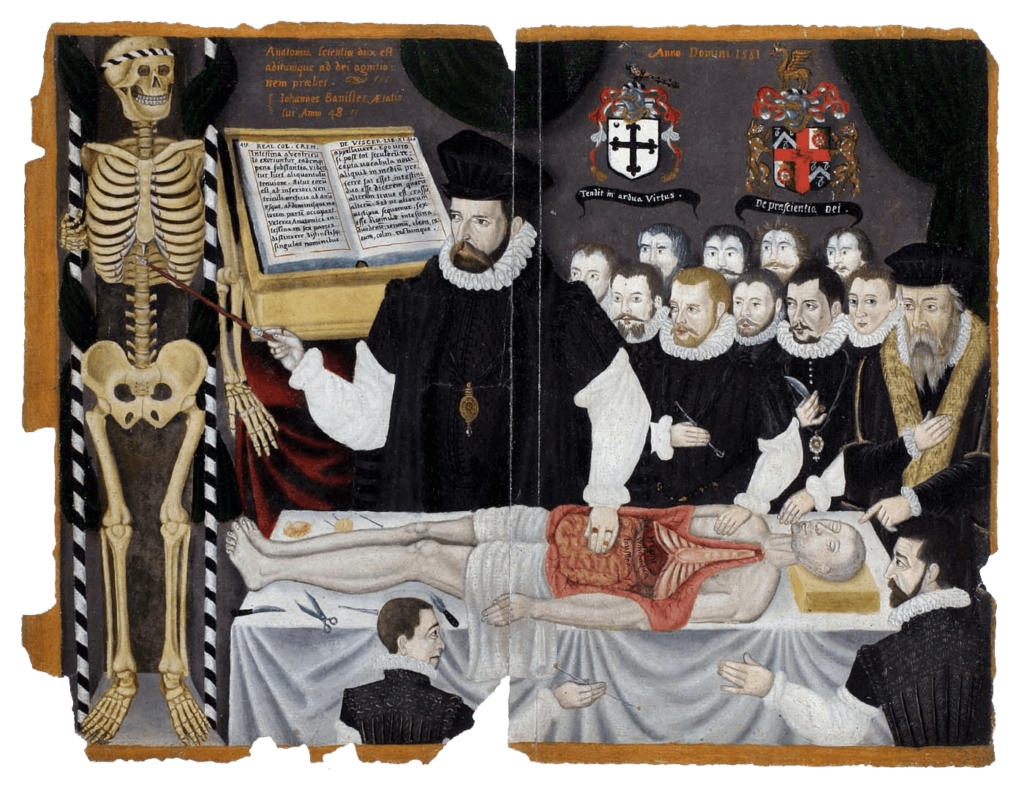
John Banister Delivering an Anatomical Lecture on the Viscera 1581, painting, 33.8 x 43.2 cm. University of Glasgow Library, Glasgow, GB 247 MS Hunter 364 (V.1.1), frontispieceUniversity of Glasgow Archives & Special Collections, MS Hunter 364. – The English surgeon and physician John Banister (1532/3–1599?) lectures on the viscera, placing his hand on the open abdomen […]
Abdominal Dissection
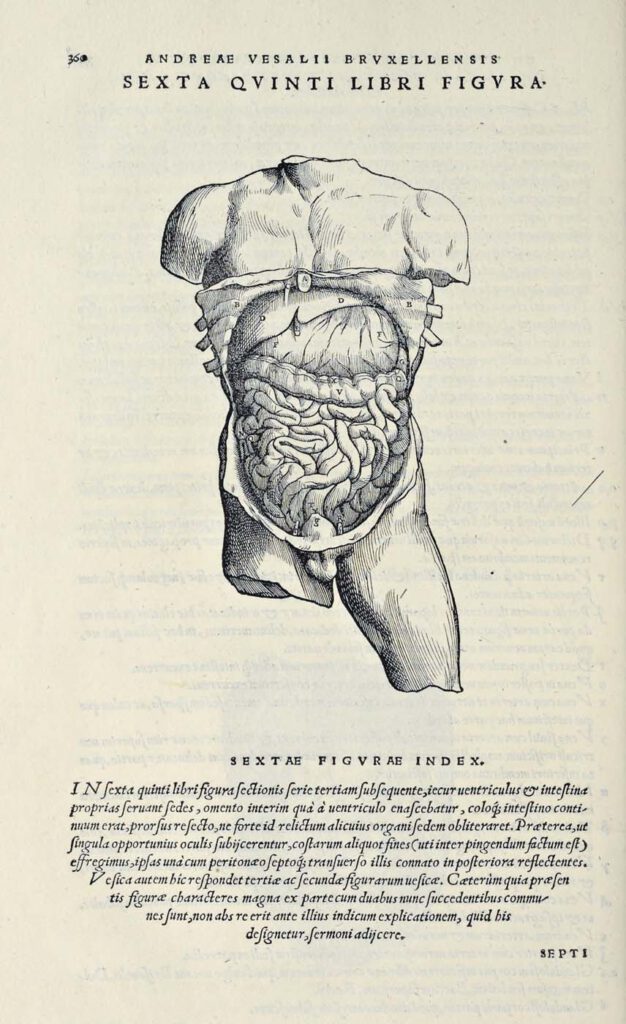
Abdominal Dissection woodcut after Jan Steven van Calcar (North Netherlandish, ca. 1515– ca. 1546). From Andreas Vesalius, De humani corporis fabrica libri septem (Basel: J. Oporinus, 1543), bk. 5, p. 360 [460], fig. 6. Getty Research Institute, Los Angeles, 84-B27611 – Ribs have been broken and the skin peeled back to display the liver, stomach, […]
Athenian red-figure cup attributed to Douris
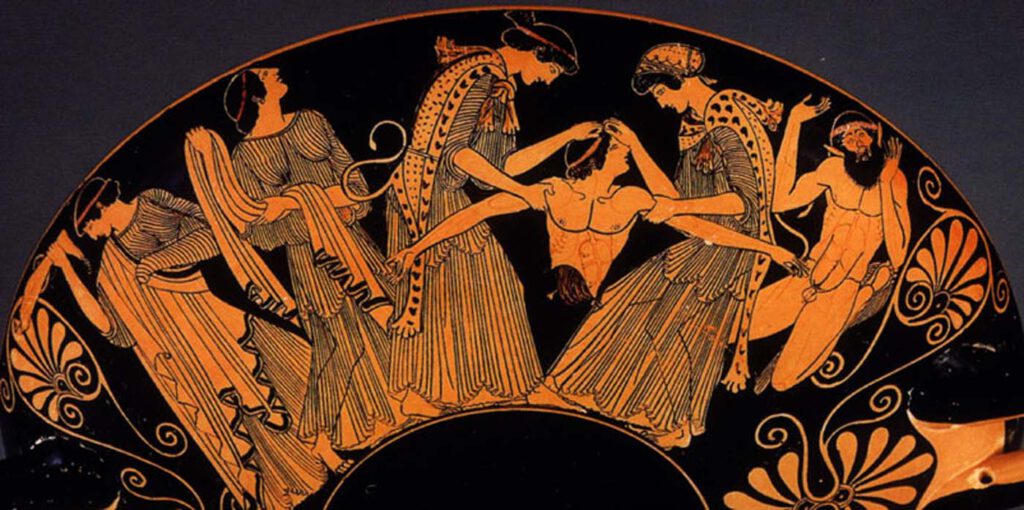
Athenian red-figure cup attributed to Douris death of Pentheus (detail), c.480 B.C. Cervetri, Museo Nazionale CeritePhoto: 2023@photo Scala, Florence, Kimbell Art Museum, Fort Worth, Texas /Art Resource, NY/Scala, Florence – The death of Pentheus is most familiar in the description given by Euripides in Bacchae. There a messenger speech describes how Pentheus’ mother, Agave, and […]
A female ‘open torso’ figurine

A female ‘open torso’ figurine Nottingham Castle Museum – This female figurine was discovered at the sanctuary of the Graeco-Roman goddess Artemis/Diana Nemorensis at Lake Nemi in Italy in 1885. It was excavated and recovered from a sacred pit where it had been ritually disposed of sometime in antiquity after it had ceased to be […]
A polyvisceral plaque
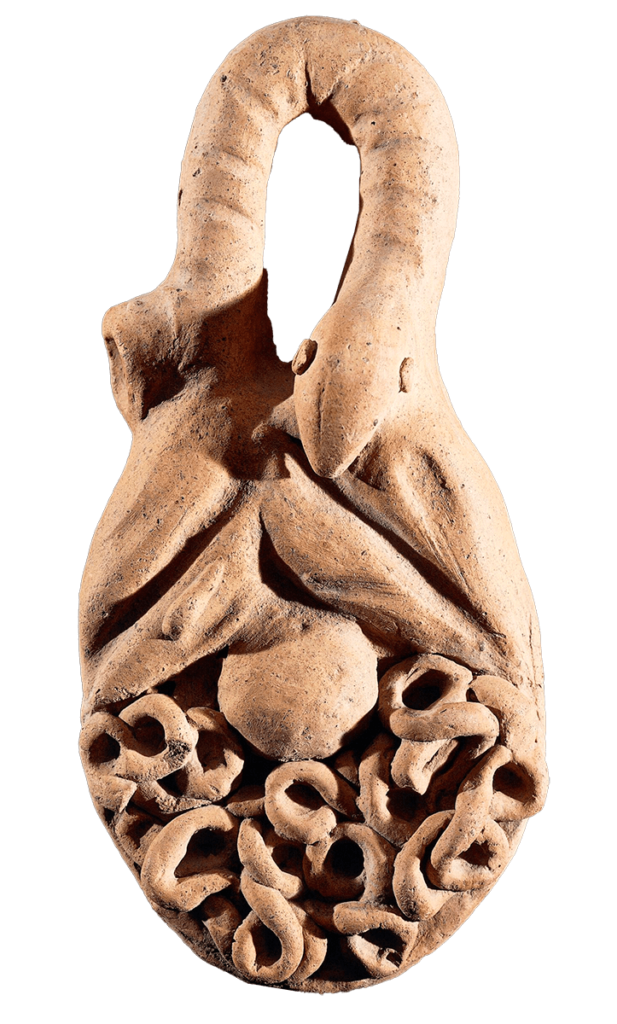
A polyvisceral plaque Museo Nazionale Etrusco Di Villa Giulia – This Etruscan polyvisceral plaque from Tessennano in Latium in Italy is thought to date from around 400 BCE. Anatomical votives like these were deposited in sanctuaries and temples as offerings to the gods, generally interpreted as a gesture of gratitude for some manner of divine […]
Anonymous, K. Sharḥ al-Maqāma al-Ṣalāḥiyya fī l-Khayl wa-al-Bayṭāra
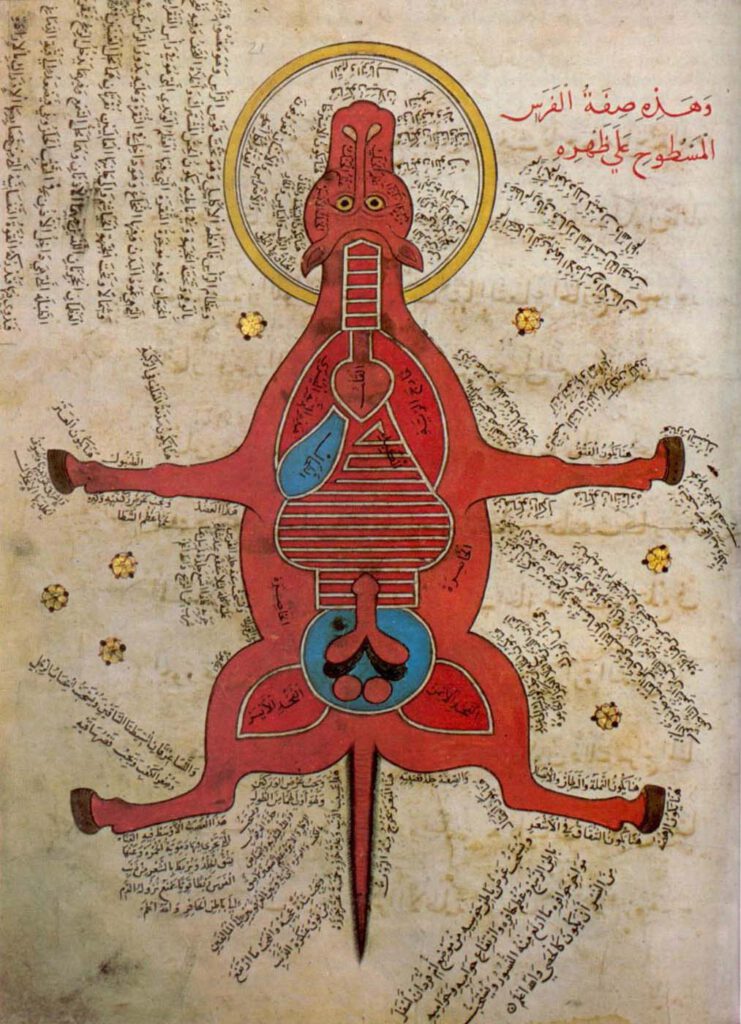
Anonymous, K. Sharḥ al-Maqāma al-Ṣalāḥiyya fī l-Khayl wa-al-Bayṭāra (Commentary on the Maqāma Ṣalāḥiyya on Horses and Venterinary) Istanbul University Library MS 4689 – Egypt, 15th c. – Hyppiatry has a long tradition in Islamic literature. Works dealing with horses may adopt different literary genres and cover a wide range of disciplines, from veterinary sciences to […]
Representation of a woman with the distribution of the blood vessels and the internal organs (f. 15v)
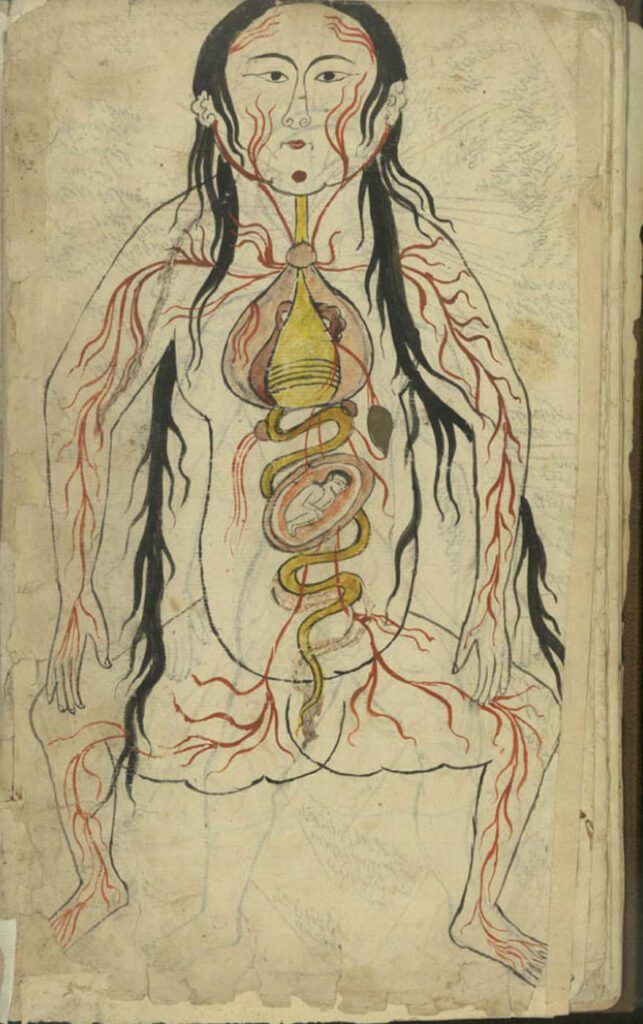
Representation of a woman with the distribution of the blood vessels and the internal organs (f. 15v) Manṣūr ibn Ilyās (fl. 14th c.), Tashrīḥ-i badan-i insān. Images from: Teheran MS Majlis 7430. Undated. This image represents the heart, lungs, liver, esophagus/larynx, stomach, intestines, kidneys, and spleen). As in the male representation, the organs involved in […]
Representation of a man with the distribution of the blood vessels and the internal organs (f. 13v)

Representation of a man with the distribution of the blood vessels and the internal organs (f. 13v) Manṣūr ibn Ilyās (fl. 14th c.), Tashrīḥ-i badan-i insān. Images from: Teheran MS Majlis 7430. Undated. The illustration depicts the heart, lungs, liver, esophagus/larynx, stomach, intestines, kidneys, and spleen. The organs involved in digestion are coloured in yellow. […]
Illustration depicting a right lateral view of the body (f. 72r)

Illustration depicting a right lateral view of the body (f. 72r) Tansūqnāmah-i Īlkhān dar funūn-i ʿulūm-i Khatāʾī (Ilkhan’s Treasure Book on the Branches of the Chinese Sciences). Istanbul MS Aya Sofya 3596. Tabriz, 1313. The image closes the sixth section. It shows the spine, the right kidney, the intestines, and the bladder. – Read the […]
